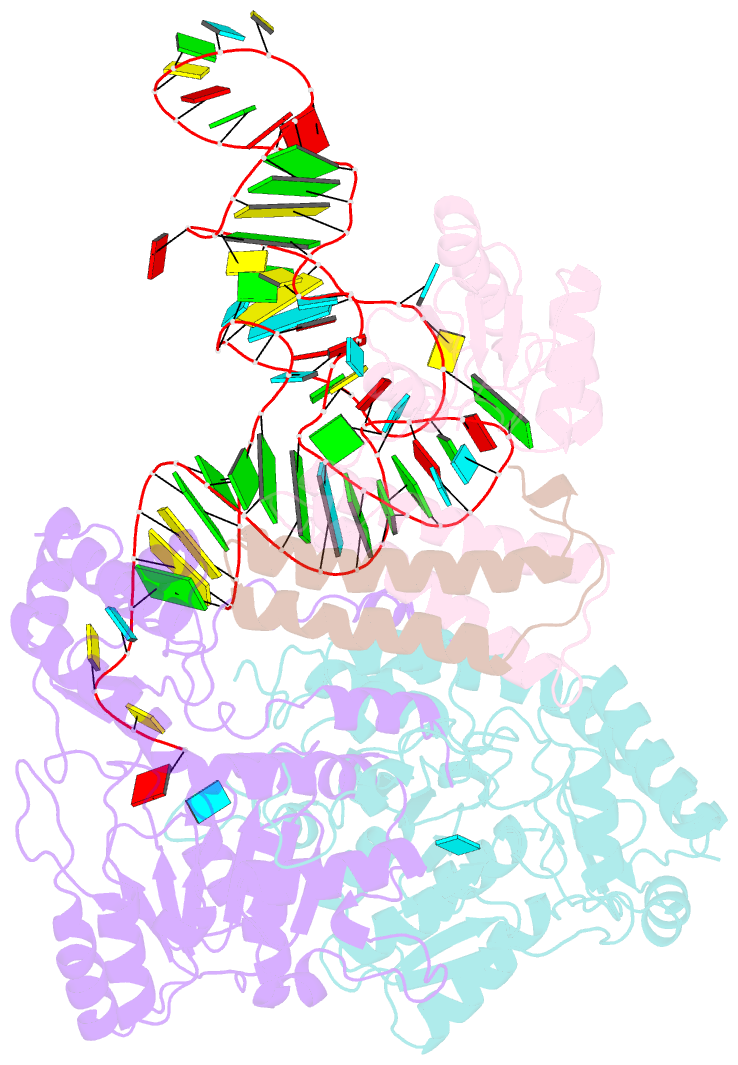Summary information and primary citation
- PDB-id
- 5x6b; SNAP-derived features in text and JSON formats;
DNAproDB
- Class
- RNA binding protein-RNA
- Method
- X-ray (2.596 Å)
- Summary
- Crystal structure of sepcyse-sepcyss in complex with trnacys from methanocaldococcus jannaschii
- Reference
- Chen M, Kato K, Kubo Y, Tanaka Y, Liu Y, Long F, Whitman WB, Lill P, Gatsogiannis C, Raunser S, Shimizu N, Shinoda A, Nakamura A, Tanaka I, Yao M (2017): "Structural basis for tRNA-dependent cysteine biosynthesis." Nat Commun, 8, 1521. doi: 10.1038/s41467-017-01543-y.
- Abstract
- Cysteine can be synthesized by tRNA-dependent mechanism using a two-step indirect pathway, where O-phosphoseryl-tRNA synthetase (SepRS) catalyzes the ligation of a mismatching O-phosphoserine (Sep) to tRNACys followed by the conversion of tRNA-bounded Sep into cysteine by Sep-tRNA:Cys-tRNA synthase (SepCysS). In ancestral methanogens, a third protein SepCysE forms a bridge between the two enzymes to create a ternary complex named the transsulfursome. By combination of X-ray crystallography, SAXS and EM, together with biochemical evidences, here we show that the three domains of SepCysE each bind SepRS, SepCysS, and tRNACys, respectively, which mediates the dynamic architecture of the transsulfursome and thus enables a global long-range channeling of tRNACys between SepRS and SepCysS distant active sites. This channeling mechanism could facilitate the consecutive reactions of the two-step indirect pathway of Cys-tRNACys synthesis (tRNA-dependent cysteine biosynthesis) to prevent challenge of translational fidelity, and may reflect the mechanism that cysteine was originally added into genetic code.





